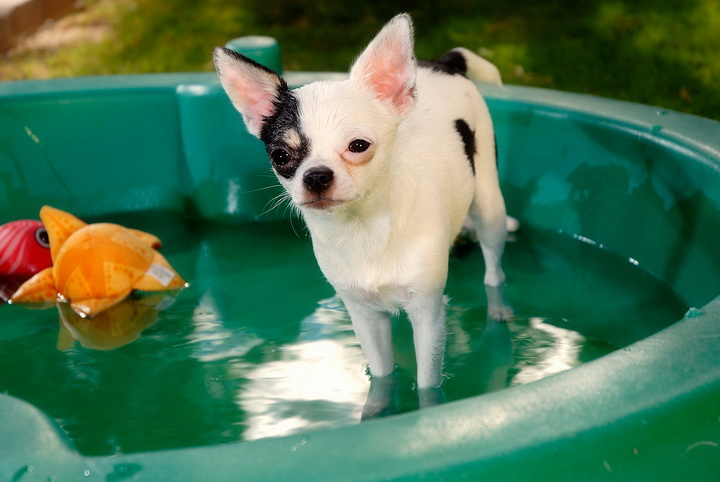Keep Your Dog Cool This Summer!
As you and your dog enjoy another summer filled with outdoor fun, long walks and picnics, make sure the sweltering heat does not affect your pet. The high temperatures of summer can easily cause a variety of heat-related illnesses. Heat stroke is one of summer’s worst illnesses and is known to take the lives of many animals every year. A dog mostly relies on panting to keep itself cool. Heat is also dissipated from the surface of the facial skin, ears and feet. The animal’s normal body temperature ranges from 100.5 to 102.5 degrees F. If the dog is exposed to extremely high temperatures, its cooling mechanisms can get overwhelmed very quickly leading to heat exhaustion, heat cramps and heat stroke.
Whilst all dogs are capable of falling prey to the heat, certain categories of dogs are particularly susceptible. Dogs bred for life in cold climates, such as the Saint Bernard and Husky, have little tolerance for heat and humidity. Short nosed dogs like the Pug, Boxer and Pekingese have short narrow respiratory systems, which cannot cope with even a small heat load. These dogs are known to collapse even if they get slightly overheated. Dark coated or black dogs, elderly and overweight dogs are also at a high risk for heat exhaustion, as are puppies and sick dogs.
Prevention
A heat stroke can happen in a matter of minutes, which is why it is best to take precautions. A humid climate especially tends to make it more difficult for dogs to cool themselves. Follow the tips below to avoid putting your dog at risk for a heatstroke:
- Never leave your dog unattended in a car for any length of time. Leaving a dog in a car in warm weather is the most common cause of heatstroke. The temperature in a parked car can reach 120degrees F in a matter of minutes, even with partially opened windows. Even a car parked in the shade can turn into a metal oven within half an hour.
- It is advisable to exercise your dog early morning or late evening when it is cooler. Keep midday walks to a minimum as the hot asphalt can burn the pads of his feet.
- Try to limit sun exposure during peak sun hours (11 am to 3 pm) on hot days. Play with your dog in shaded areas and make sure you provide him with plenty of cool drinking water. During the day, keep your dog either under air conditioning or in a well-ventilated area with circulating fans.

Symptoms And Treatment
Heat stroke is a serious condition and should be dealt with quickly and seriously. The best way to keep it in control is to monitor your dog for signs of heat exhaustion. An affected dog will appear sluggish and disorientated. The gums, tongue and conjunctiva will appear red in colour, he will have trouble breathing and may have excessive salivation. The dog can also start vomiting and will have a high body temperature. Eventually the animal will collapse, suffer a seizure or go into a coma.
If you suspect your dog is suffering from a heatstroke, shift your dog to a cooler area and immediately call your vet. Your first concern should be to reduce the dog’s temperature. Placing a wet towel over the dog or immersing him in a tub of cool water should help. Avoid using ice water as it can harm the skin and can impede the cooling process. You can also place your dog in an air-conditioned room and apply ice packs to the neck, groin and armpits for a short time.
Take your dog’s temperature rectally every ten minutes till it drops to 103 degrees F and then stop the cooling process or the dog’s temperature can drop to below normal and further complicate matters. Keep in mind that small dogs will cool faster than large ones.
Do not offer more than a few sips of water to the affected dog; give just enough to keep the dog’s mouth wet. It won’t help in cooling the dog and may even cause abdominal bloat if the dog is panting heavily. Once the temperature has gone down and the panting has slowed, you can offer water to your dog.
After cooling your dog, immediately take him to the vet. Your vet may need to give medication to control any seizures and prevent damage to the brain.
If your dog gets overheated whilst in the car, drive to the nearest vet with your air-conditioner on at full blast.
With a few precautions and plenty of common sense your dog and you can enjoy an injury free summer.
- The Dark Side Of Pampered Pets: Is Your Kindness Harming Your Dog? - 16 March2024
- Kids And Preventing Dog Bites - 18 March2023
- Ordinary Dogs With Extraordinary Jobs - 13 August2022
